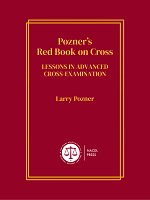- Indiana abolished discretionary parole in 1977.
- Imposes mandatory LWOP and JLWOP. Minimum age for JLWOP is 16. Ind. Code Ann. § 35-50-2-3.
- Indiana does not provide a minimum age for juvenile transfer to adult court
State Constitution
Ind. Const. Art. 1, § 16 (2012)
§ 16. Excessive bail, punishment, and penalties. -- Excessive bail shall not be required. Excessive fines shall not be imposed. Cruel and unusual punishments shall not be inflicted. All penalties shall be proportioned to the nature of the offense.
NOTE: Article 1, Section 16 of the Indiana Constitution is broader than the Eighth Amendment. It contains an independent proportionality clause.
Ind. Const. Art. 1, § 18 (2012)
§ 18. Reformation as basis of penal code. -- The penal code shall be founded on the principles of reformation, and not of vindictive justice.
Sentencing Statutes
- Sentencing Guidelines System – Indiana does not have sentencing guidelines.
- Habitual Offender Statute – Burns Ind. Code Ann. § 35-50-2-8 (2012) -- 35-50-2-8. Habitual offenders.
Case Law
State Constitution
Article I, Section 16 of the Indiana Constitution “goes beyond the protection against cruel and unusual punishment contained in the Eighth Amendment to the U.S. Constitution.” Taylor v. State, Ind., 511 N.E.2d 1036 (Ind. 1987).
Unlike the Federal Constitution, the Indiana Constitution requires a proportionality analysis. This analysis considers the nature and gravity of the present offense as well as the nature of the prior offenses. Moore v. State, 515 N.E.2d 1099, 1105 (Ind. 1987).
Article 1, Section 16 of the Indiana Constitution “can provide more protections than the United States Constitution provides.” Conley v. State, 2012 Ind. LEXIS 642, 30-31 (Ind. July 31, 2012) (citing Justice v. State, 552 N.E.2d 844, 847 (Ind. Ct. App. 1990)).
The following cases mention both Article I, Section 16 of the Indiana Constitution and the Eighth Amendment, but do not provide significant, separate analysis of Section 16:
- Prentice v. State, 474 N.E.2d 496, 502 (Ind. 1985) –
- Hernandez v. State, 439 N.E.2d 625, 631 (Ind. 1982) –
- Arnold v. State, 436 N.E.2d 288 (Ind. 1982) –
- Comstock v. State, 273 Ind. 259, 263 (Ind. 1980) –
- Richardson v. State, 270 Ind. 566 (Ind. 1979) –
- Thomas v. State, 264 Ind. 581 (Ind. 1976) –
- Vacendak v. State, 264 Ind. 101, 105 (Ind. 1976) –
- Person v. State, 764 N.E.2d 743, 751 (Ind. Ct. App. 2002) –
Compare with conflicting, older case law:
- The language of the Eighth Amendment and Article I, Section 16 of the Indiana Constitution are very similar; Indiana courts have no reason to create a greater or lesser standard under Section 16 than there is under the Eighth Amendment. Norris v. State, 271 Ind. 568, 576 (Ind. 1979); Hall v. State, 273 Ind. 425, 435 (Ind. 1980).
Proportionality
The constitutional prohibition against cruel and unusual punishments proscribes atrocious or obsolete punishments and is aimed at the kind and form of the punishment, rather than the duration or amount. See Dunlop v. State, 724 N.E.2d 592, 597 (Ind. 2000).
The legislature determines appropriate penalties for criminal acts. Rowe v. State, 262 Ind. 250 (Ind. 1974); Lowe v. State, 260 Ind. 610 (Ind. 1973). Indiana courts will disturb such a determination only upon a showing of clear constitutional infirmity. Vacendak v. State, 264 Ind. 101, 105 (Ind. 1976); McGowan v. State, 671 N.E.2d 872, 884 (Ind. Ct. App. 1996).
However, the fact that a defendant’s sentence falls within the statutory range does not relieve the court of its constitutional duty to review the duration of that sentence because the statute may still be unconstitutional as applied. Even if a sentence falls within the statutory sentencing range, a defendant is still entitled to a proportionality review under Article 1, Section 16 of the Indiana Constitution. Clark v. State, 561 N.E.2d 759, 765-766 (Ind. 1990).
I. Standard Proportionality Test
Under Article I, Section 16, a “punishment is excessive and unconstitutional it if (1) makes no measurable contribution to acceptable goals of punishment but rather constitutes only purposeless and needless imposition of pain and suffering, or (2) is grossly disproportionate to the severity of the crime.” Dziepak v. State, 483 N.E.2d 449, 453 (Ind. 1985) (citing Douglas v. State, 481 N.E.2d 107, 112 (Ind. 1985)); Stader v. State, 453 N.E.2d 1032 (Ind. Ct. App. 1983); Burch v. State, 450 N.E.2d 528, 530-531 (Ind. 1983); Inman v. State, (271 Ind. 491, 498 (Ind. 1979); See McElroy v. State, 592 N.E.2d 726, 731-732 (Ind. Ct. App. 1992); Frappier v. State, 448 N.E.2d 1188, 1190 (Ind. 1983).
The Indiana Constitution requires that a sentence be proportionate to the nature of the offense. Harrison v. State, 699 N.E.2d 645, 651 (Ind. 1998). However, this does not require the court to compare the offender’s sentence to the sentences of other offenders convicted of the same crime. Farris v. State, 753 N.E.2d 641, 648 (Ind. 2001) (citing Gambill v. State, 675 N.E.2d 668, 678 (Ind. 1996)). See Roche v. State (1992), Ind., 596 N.E.2d 896; State v. Alcorn, 638 N.E.2d 1242, 1246 (Ind. 1994).
Life imprisonment without parole does not constitute cruel and unusual punishment. Conley v. State, 2012 Ind. LEXIS 642 (Ind. July 31, 2012) (internal citations omitted). Similarly, use of the death penalty does not constitute cruel and unusual punishment. Thompson v. State, 492 N.E.2d 264 (Ind. 1986); Adams v. State, 259 Ind. 64, 73 (Ind. 1971).
The execution of a mentally retarded individual is not a per se violation of the Indiana Constitution. Rondon v. State, 711 N.E.2d 506 (Ind. 1999).
Under Art. 1, § 16, “the penalty for the lesser included offense may not be greater than that provided for the greater offense.” Rector v. State, 264 Ind. 78, 82 (Ind. 1976) (citing Clark v. State, (1974) 160 Ind. App. 206, 311 N.E.2d 439 at 440)). Nevertheless, “the legislature may properly impose on separate and distinct offenses penalties not proportionate to one another.” Rector v. State, 264 Ind. 78, 82 (Ind. 1976).
Proportionality in sentencing does not require comparison between the statute the offender was sentenced under and the revised version of that statute. Johnson v. State, 654 N.E.2d 788, 790-791 (Ind. Ct. App. 1995).
II. Habitual Offender Proportionality Test
Indiana’s habitual offender statute does not violate the prohibition against cruel and unusual punishment by vesting discretion in the prosecutor. Funk v. State, 427 N.E.2d 1081, 1086 (Ind. 1981). Furthermore, a properly imposed sentence under Indiana’s habitual offender statute is not per se disproportionate. Traylor v. State, 420 N.E.2d 887, 890 (Ind. 1981).
The proportionality analysis of a habitual offender penalty has two components: First, a reviewing court should judge the nature and gravity of the present felony, and second, the court should consider the nature of the prior offenses. Taylor v. State, 511 N.E.2d 1036, 1039 (Ind. 1987); Conner v. State, 626 N.E.2d 803, 806 (Ind. 1993); Clark v. State, 561 N.E.2d 759, 765-766 (Ind. 1990).
Leading Court Discussions of Graham and Miller
Conley v. State, 972 N.E.2d 864 (Ind. July 31, 2012) (As one of the 15 jurisdictions where LWOP for juveniles is discretionary and therefore not unconstitutional under Miller) (dissent: Miller decision does not preclude a conclusion that discretionary sentence can also be unconstitutional. Miller shows Supreme Court’s underpinned recognition that juveniles are less culpable than adults and therefore are less deserving of the most severe punishments.)
Fuller v. State, 48S02-1406-CR-364, 2014 WL 2466325 (Ind. June 2, 2014) (Apply underpinned principle in Miller and Graham to non-mandatory cases and remand a sentence of years to juvenile of 150 years to 85 years because it is not particularly heinous. 150 years is a denial of hope under Graham.)
Brown v. State, 48S02-1406-CR-363, 2014 WL 2466322 (Ind. June 2, 2014) (revise the sentence from 150 to 80 according to Graham and Miller’s underpinned principle that juveniles are less culpable than adults)
Knapp v. State, 28S00-1305-LW-327, 2014 WL 2617279 (Ind. June 12, 2014) (Challenge under Eighth Amendment are never successful in intentional homicide cases. “Narrow proportion principle” apply to non-capital cases.)
Severe Sentences
Ellis v. State, 736 N.E.2d 731, 2000 Ind. LEXIS 973 (2000) – A defendant’s 165-year sentence was not disproportional to the nature of the offenses committed when reviewed under the Indiana Constitution
Slone v. State, 496 N.E.2d 401, 1986 Ind. LEXIS 1253 (1986) – It was not a cruel and unusual punishment to sentence a 19-year-old man to a 60-year sentence, although he did not directly commit the murder himself, as this sentence was within the bounds of the statutory limits and not unreasonable based on the facts and circumstances of defendant's conduct.
Taylor v. State, 511 N.E.2d 1036, 1987 Ind. LEXIS 1031 (1987) – Thirty-two-year sentence for the theft of $50 worth of merchandise, when the conviction was defendant's fifth nonviolent felony, did not constitute cruel and unusual punishment.













